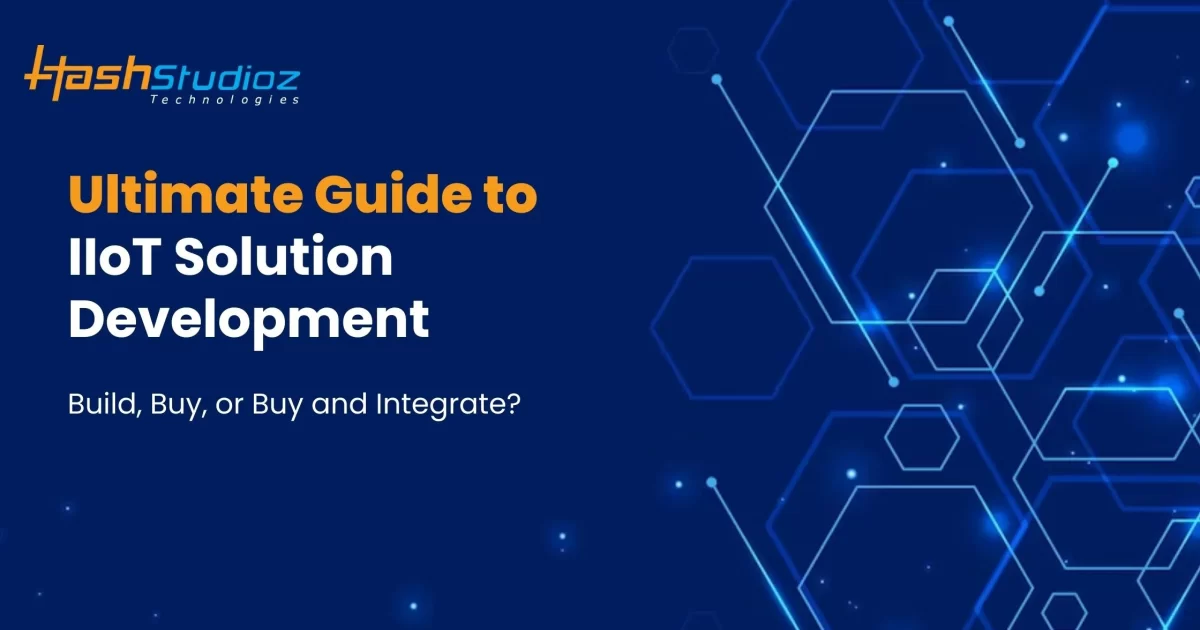In this era of technological advancement, businesses face a crucial decision: should they build their own IIoT solutions from scratch, buy ready-made solutions, or opt for a combination of both?
Join us as we delve into the pros and cons of each approach, helping you navigate the complexities of IoT development to find the perfect fit for your needs.
Table of Contents
Why it Matters?
For IoT adopters: It is important to consider data when choosing the best approach when implementing IoT.
For IoT vendors: Different types of customers require different approaches to IIoT solutions based on data.
IoT can be a powerful tool for improving your business. The best approach for a particular organization will depend on a number of factors, including the organization’s goals, its resources, and its existing infrastructure.
This article will show you how to choose the right approach for your business.
3 Ways to Implement IIoT and Transform Your Business
Unleash the transformative power of IIoT Solutions in your business with these innovative approaches that will revolutionize your operations, optimize efficiency, and unlock untapped potential.
1. Build Approach
A total of 47% of respondents said they used the build approach for their IIoT initiatives, and 40% said the custom-built solutions exceeded their expectations. Each industry has its own solution footprint. Building industry respondents reported using the build approach 89% of the time, while machinery industry respondents reported using the build approach 33% of the time.
Advantages
- Building IIoT solutions give companies intellectual property rights, and they can include any features they like.
- IIoT solutions can be customized in every way, from how they integrate with new and existing equipment to the user interface/user experience.
- Moreover, organizations don’t need to lock in with vendors.
Disadvantages
- Developing an IoT solution costs money, effort, and time. An organization needs either a robust IT department or a reliable partner to build, integrate, and maintain the solution for them.
- Developing a solution can be expensive, with large funding often taking time to approve. Budget constraints were the biggest challenge faced by 20% of respondents.
- Typically, building an IIoT solution takes the longest time to implement compared to the other two approaches. It took stakeholders on average 9 months to develop their business cases, compared to 6 months for the buying approach. In addition to the development and launch phases, the median amortization time for investments was also longer than the buying approach.
2. Buy Approach
IoT developers from various industries are sharing lessons learned, resulting in more off-the-shelf solutions becoming available, though availability is still limited. Organizations can integrate tried-and-tested IIoT solutions with their standard industrial hardware or IT architectures to improve operation and analysis. Starting with a ready-made IIoT solution allows new companies to build their IT/OT architecture around their IIoT solution rather than trying to integrate after the fact.
Advantages
- Ready-made solutions can benefit new or small organizations with limited budgets and resources.
- Another benefit of the buying approach is that it reduces implementation time. According to the research, the median time required for this approach to complete the first two phases of an IIoT project was 9 months, while the building approach took 16 months. Buy approaches offer ready-made, reliable solutions that require only customization to fit an organization’s needs and equipment.
- According to the research, 43% of respondents who used the buying approach experienced reduced break-even points, with a median of 12 months from the first project-related expense to reaching the break-even point versus 20 months for other approaches.
- Finally, a buy approach keeps an organization slim. Ready-made solutions are often supported and updated by external developers, so the organization no longer has to maintain an internal team.
Disadvantages
- Only 13% of respondents said the buying approach exceeded their expectations, even though it limits resources and shortens implementation time. Using ready-made solutions, 30% of projects lacked end-user capabilities, while 20% faced cyber security challenges.
- A total of 13% of projects had both internal cooperation and resistance to change issues. It may be difficult for organizations to integrate commercial IIoT solutions into their processes and architectures as IIoT solutions come with their processes, workflows, and equipment.
3. Buy-and-Integrate Approach
The buy-and-integrate approach is used by 38% of IIoT initiatives in the dataset. Organizations can integrate IIoT solutions to meet their IT/OT as well as user experience requirements by combining proven technology and product support. Build-and-buy solutions also have some limitations, such as a long implementation time and limited capabilities for end users.
Build-and-integrate solutions were most common in the electronics and machinery industries (57% and 52%, respectively).
Advantages
The buy-and-integrate approach may be necessary for several reasons, including these:
- It is difficult to find off-the-shelf solutions suitable for the IoT architecture of an organization
- Limitations on the ability to fully develop and/or maintain a solution
- Having a limited budget
- Existing solutions do not meet the needs of cybersecurity
Among the reasons for choosing this approach are:
- The ability to customize a majority of the solution
- Offering a competitive advantage that is not possible with widely available off-the-shelf solutions
- Reducing vendor dependencies, while balancing necessary support with in-house adaptation capabilities.
A buy-and-integrate approach can also benefit complex integration projects where custom-built solutions are too expensive or ready-made solutions are not suitable.
Moreover, the company’s buy-and-integrate strategy enabled it to integrate various commercial software tools with its OT equipment.
Disadvantages
In addition to finding a positive middle ground between the other two approaches, the buy-and-integrate approach also absorbs some of their disadvantages.
- A ready-made solution is often designed with specific applications in mind, so engineers and developers must understand the solution and work with vendors to develop additional integration services. Stakeholders both internally and externally will need to be managed in this way.
- A buy-and-integrate approach may be ideal for complex projects, but implementing and integrating it was the top challenge for adopters (19% of projects).
- Additionally, 15% of projects lacked IT capabilities to customize and integrate the solutions, requiring further dependence on vendors to develop and maintain them.
- Adding integration services will increase the organization’s workload, resulting in uncertain costs.
Among the three options, this approach has the longest break-even time for these reasons.
Finding the Right Approach

The right approach for individual IIoT projects depends on many organizational factors, including available budgets, desire to differentiate from the competition, break-even and ROI goals, and use cases.
According to the research, 30% of projects begun in 2021 or 2022 used the buying approach, compared to only 9% of projects completed in or before 2020. As a result of this growth, the buy-and-integrate approach has declined from 50% to 28% in preference.
Most organizations, still use build and buy-and-integrate approaches. However, if you are looking for a faster and more cost-effective solution, buying an IoT solution may be a better choice.





